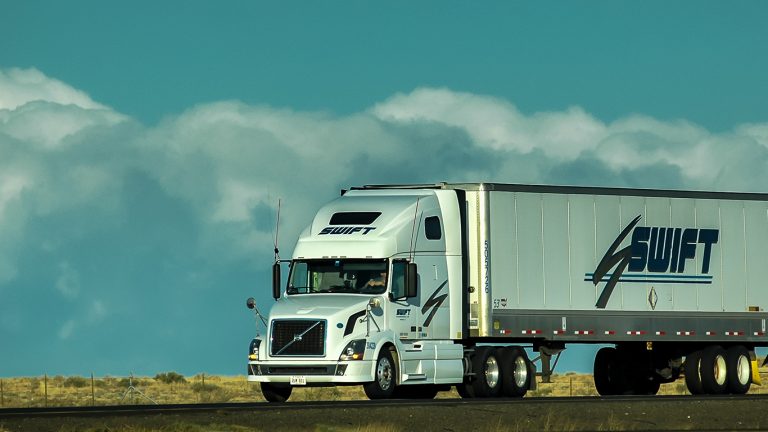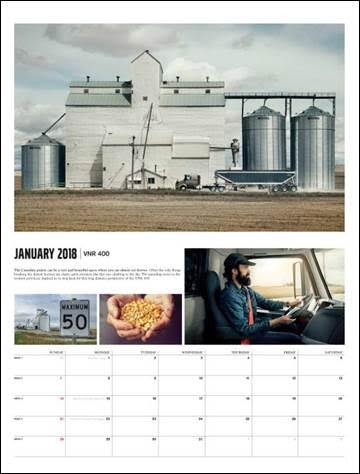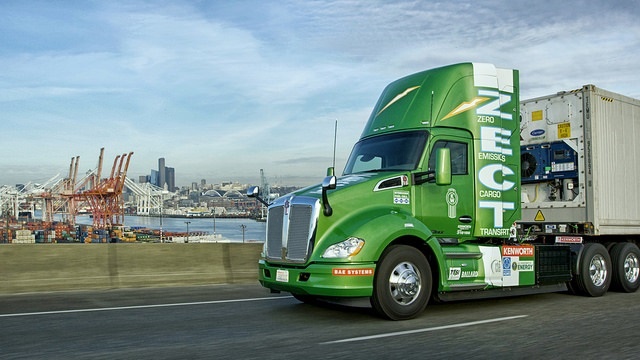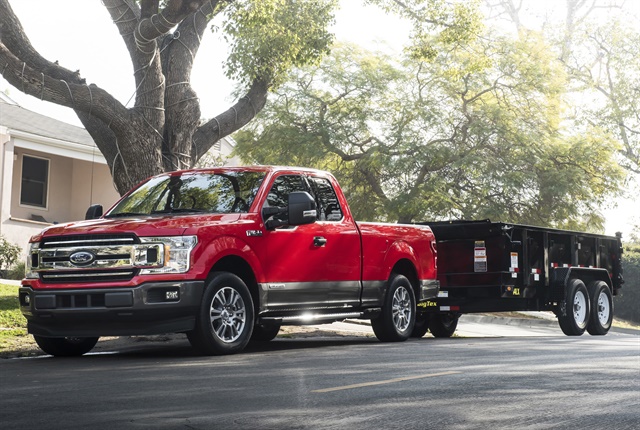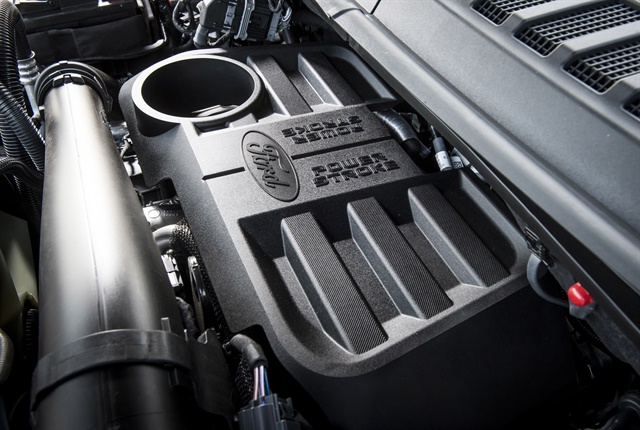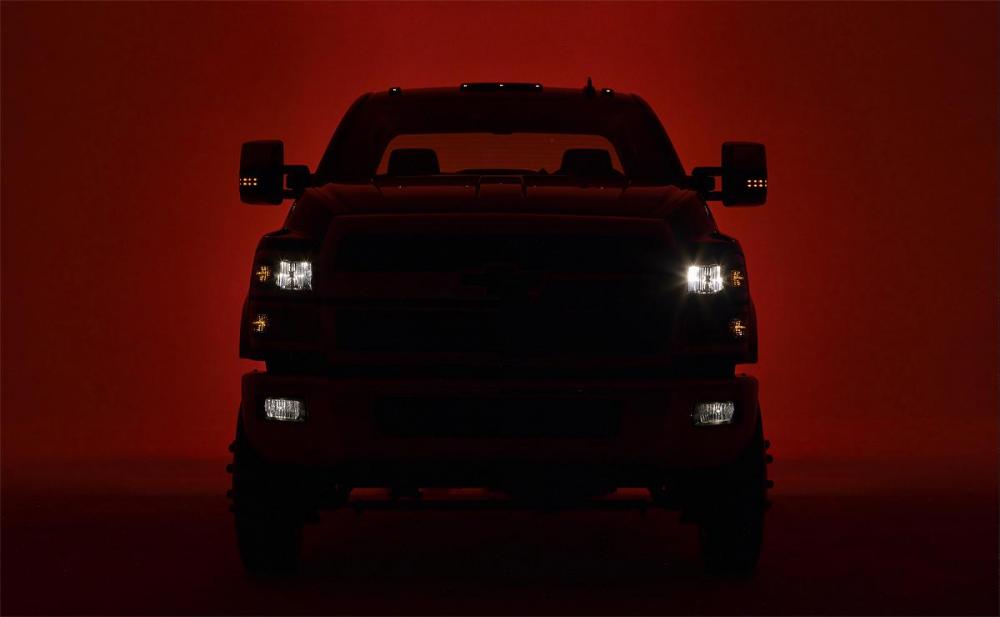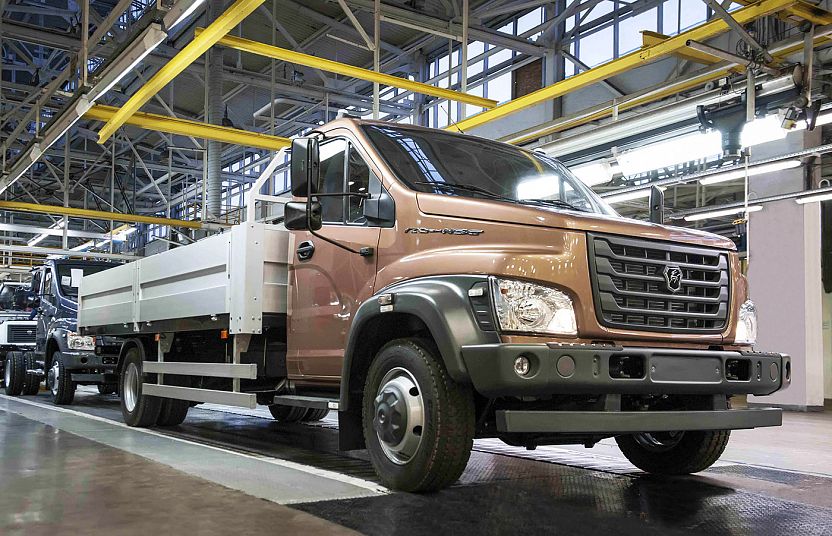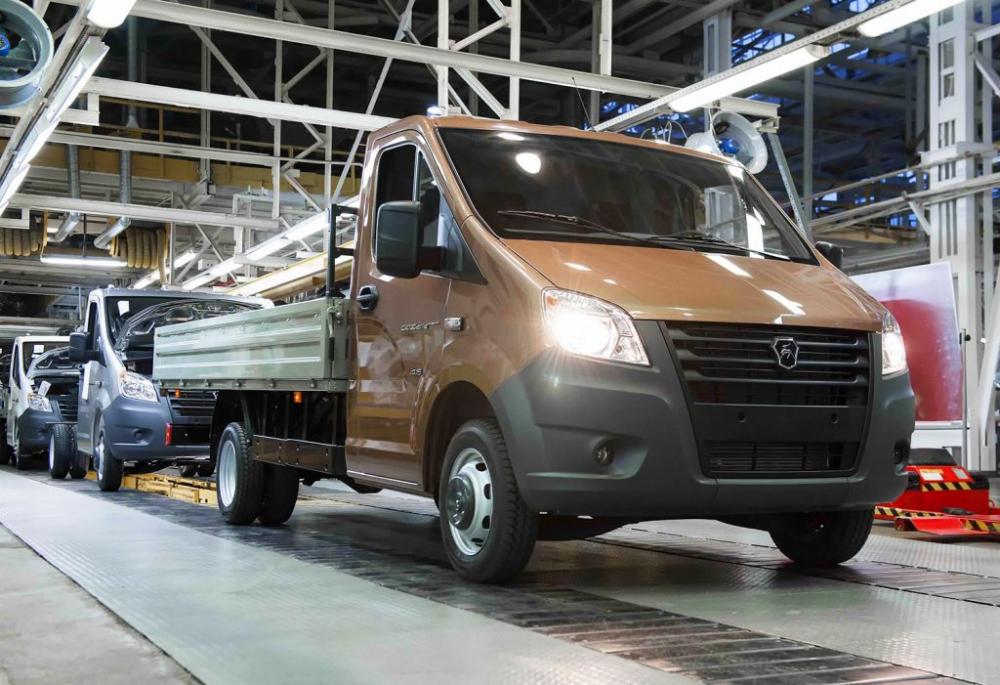
kscarbel2
Moderator-
Posts
17,893 -
Joined
-
Days Won
86
Content Type
Profiles
Forums
Gallery
Events
Blogs
BMT Wiki
Collections
Store
Everything posted by kscarbel2
-
Associated Press / January 4, 2017 Sears Holdings Corp. will be closing over 100 more stores as the struggling department store chain tries to turn around its business. The Hoffman Estates, Illinois-based company says 64 Kmart stores and 39 Sears stores will be shuttered between early March and early April. Liquidation sales will begin as soon as next Friday at the stores. A Sears spokesman said Thursday the number of workers affected was not available. The majority of the jobs are part-time positions, Sears said. The move comes in addition to closing about 250 stores announced last year. Sears has been selling off some its real estate and brands as it tries to raise cash.
-
James Jaillet, Commercial Carrier Journal (CCJ) / January 9, 2018 A former IT worker at Swift Transportation has pleaded guilty to federal felony charges related to several alleged scams in which he embezzled $1.65 million from the carrier giant over the course of three years, according to court documents. David Dwight Reynolds, a network engineer at the Phoenix-based Swift, made hundreds of thousands of dollars in personal purchases on company credit cards, which he disguised as company purchases, between 2013 and 2016. He also between 2014 and 2016 created a fake company and used it to bill Swift for hundreds of thousands of dollars in invoices for work performed by real contractors. Both schemes cheated Swift out of more than $800,000, combining for the total of $1.65 million. Prosecutors say Reynolds used Swift credit cards to buy items like cellphones, furniture, TVs, cameras, computers, welding equipment and gun accessories — amounting in the three-year span to $865,000 in purchases. He would then create fraudulent invoices to file with his supervisors to hide the personal expenses. The fraudulent firm he created, PNG Solutions, would bill Swift for IT work performed by other contractors, according to court records. He would pay the contractors with a Swift credit card, and then send an invoice, often for a higher amount, to Swift’s accounts receivable department to issue a check to PNG Solutions for the work performed by the real contractor. Reynolds embezzled another $800,000 out of Swift with the duplicate invoices, according to court records. Reynolds entered a guilty plea to felony charges of wire fraud, mail fraud, money laundering and tax evasion. He’s due in court April 4 to pay Swift $2 million restitution and to pay $560,000 in back taxes, as well as to face sentencing. .
-
Fleet Owner / January 8, 2018 The 2018 Volvo Trucks North America calendar features photos of the new Volvo VNR series for regional haul and Volvo VNL series for long-haul operating in dynamic environments. Volvo Trucks provides complete transport solutions for professional and demanding customers, offering a full range of medium to heavy duty trucks. Customer support is secured via a global network of 2,000 dealers and workshops in more than 120 countries. Volvo trucks are assembled in 15 countries across the globe. In 2016, more than 102,800 Volvo trucks were delivered worldwide. Volvo Trucks is part of Volvo Group, one of the world’s leading manufacturers of trucks, buses and construction equipment and marine and industrial engines. The Group also provides solutions for financing and service. Volvo’s work is based on the core values of quality, safety, and environmental care. Calendars are $15 and can be ordered online by clicking here. .
-
Kenworth Shows Hydrogen Fuel Cell T680 at CES
kscarbel2 replied to kscarbel2's topic in Trucking News
Kenworth T680 equipped with hydrogen fuel cell on display at CES Fleet Owner / January 10, 2018 LAS VEGAS. A zero-emission Kenworth T680 day cab equipped with a hydrogen fuel cell is on display at the 2018 Consumer Electronics Show (CES), which opened this week in Las Vegas. The truck is part of the Paccar Innovations booth exhibit. The vehicle is part of the Zero Emission Cargo Transport (ZECT) demonstration project managed through Southern California’s South Coast Air Quality Management District (SCAQMD). The Kenworth T680 day cab’s fuel cell combines compressed hydrogen gas and air to produce electricity with water vapor emitted at the tailpipe. According to the company, the electricity can power the dual-rotor electric motor to move the truck, or it can recharge the lithium-ion batteries for use later. The hybrid drive system manages the power from the fuel cell to and from the batteries, as well as the traction motors and other components, such as the electrified power steering and brake air compressor. “Kenworth’s hydrogen fuel-cell T680 is a reality,” said Stephan Olsen, Kenworth director of product planning. “The T680 has been running trials in the Seattle area and performing very well. The next step is real-world testing with Total Transportation Services Inc. (TTSI) at the ports of Los Angeles and Long Beach in Southern California.” According to Olsen, the hydrogen fuel-cell based Kenworth T680 will have an initial range of 150 miles, making it ideal for short haul and port operations. With a dual-rotor traction motor output of 565 hp, the truck is capable of carrying the legal gross combination weight of a Class 8 vehicle. -
Heavy Duty Trucking (HDT) / January 9, 2018 Kenworth showed a zero-emissions T680 day cab equipped with a hydrogen fuel cell as part of its Paccar Innovations booth at the Consumer Electronics Show in Las Vegas. This is the first time Paccar and Kenworth have exhibited at CES, an electronics industry trade show with an eye on future technologies and innovations that draws in close to 200,000 visitors. Kenworth's zero-emissions project was announced in May 2017 and is part of the Zero Emission Cargo Transport demonstration project managed through Southern California’s South Coast Air Quality Management District. The Kenworth T680 day cab’s fuel cell combines compressed hydrogen gas and air to produce electricity with only water vapor emitted at the tailpipe. This electricity can power the dual-rotor electric motor to move the truck, or it can recharge the lithium-ion batteries for use later. The hybrid drive system manages the power from the fuel cell to and from the batteries, as well as the traction motors and other components, such as the electrified power steering and brake air compressor. “Kenworth’s hydrogen fuel-cell T680 is a reality,” said Stephan Olsen, Kenworth director of product planning. “The T680 has been running trials in the Seattle area and performing very well. The next step is real-world testing with Total Transportation Services Inc. at the ports of Los Angeles and Long Beach in Southern California.” The truck will intitially have a range of 150 miles and is designed for short haul and port operations. The truck's electric motor can output 565 horsepower and is capable of carrying Class 8 loads. “Our testing shows that this truck performs equally as well, if not better than, current diesel trucks on the market,” said Olsen. “There is a lot of promise, and we see the day where Kenworth’s zero and near-zero emission trucks could be a common sight in regional operations. Kenworth is heavily focused on the evaluation and development of both zero and near-zero emission solutions for the trucking industry.” To develop the hydrogen-based T680, Kenworth used $2.8 million in funding under a larger grant from the U.S. Department of Energy’s Office of Energy Efficiency and Renewable Energy, with Southern California’s South Coast Air Quality Management District being the prime applicant. Project oversight is provided by the Center for Transportation and the Environment. Kenworth is also working on a second project under the larger program for DOE and SCAQMD to develop a near-zero emission-capable T680 day cab using a near-zero natural gas engine and generator to extend the battery range. .
-
Cummins Westport natural gas engine gets key emissions certifications
kscarbel2 replied to kscarbel2's topic in Trucking News
EPA, CARB Certify Cummins Westport ISX12N Natural Gas Engine Heavy Duty Trucking (HDT) / January 9, 2018 Cummins Westport announced that the Environmental Protection Agency and California Air Resources Board have certified the 2018 ISX12N natural gas engine. The ISX12N was certified to meet CARB’s optional low NOx standard of 0.02 g/bhp-hr, a 90% reduction from engines operating at the current EPA NOx limit of 0.2 g/bhp-hr, according to CWI. The ISX12N also meets 2017 EPA greenhouse gas emission requirements. Based on the ISX12 G, first introduced in 2013, the ISX12N natural gas engine will be available with ratings from 320 to 400 horsepower and up to 1,450 lb-ft. of peak torque. The ISX12N is designed for line haul, regional haul, refuse, and vocational trucks, as well as motorcoach and commuter buses. Like Cummins Westport’s new L9N and B6.7N engines, the ISX12N will feature a new engine control module with improved durability, on-board diagnostics, an enhanced, maintenance-free three-way catalyst, and a closed crankcase ventilation system, according to the company. All CWI engines offer customers the choice of using compressed natural gas, liquefied natural gas, or renewable natural gas as a fuel. RNG is pipeline-quality natural gas produced from the decomposition of organic waste, which can come from a variety of sources such as dairy farms, landfills, and urban waste treatment plants. Combining Cummins Westport’s ultra-low emission engines with RNG fuel provides additional GHG reductions, according to CWI. “Cummins Westport’s 2018 product line offers customers ultra low emissions with reliable performance,” said Bart van Aerle, president of Cummins Westport. “The ISX12N near-zero emissions natural gas engine provides truck and bus customers with an industry-leading alternative fuel option for demanding applications.” Production will begin in February of 2018. -
EPA to rescind glider kit emissions regs enacted last year
kscarbel2 replied to kscarbel2's topic in Trucking News
Environmental Group, State Attorneys Urge EPA to Keep Glider Kit GHG Rules Heavy Duty Trucking (HDT) / January 8, 2018 Environmental advocates, state attorneys general and others are urging the Environmental Protection Agency to maintain the previous administration’s regulation restricting the use of glider kits under the Greenhouse Gas Phase 2 rules, calling the current efforts to reverse the rule at odds with the Clean Air Act. Last November, the EPA moved ahead with its promise to repeal the glider provision found in the 2016 GHG rules. The EPA’s proposed repeal contends that glider kits should not be included GHG regulations because glider vehicles are not technically “new motor vehicles” and glider engines are not “new motor vehicle engines," and thus are not subject to the EPA’s authority on environmental regulations. In a phone conference Monday, the Environmental Defense Fund challenged this reading as intentionally misrepresentative of the CAA, saying it went against the principles upon which the legislation was founded. “For EPA to propose an interpretation of the Clean Air Act that would exclude these extremely high-polluting trucks from emissions standards is not only an unreasonable reading of the plain text of the CAA, it’s also at odds with and severely undermines the core purpose of the Clean Air Act,” said Alice Henderson, EDF attorney. EDF representatives also pointed out that industry stakeholders didn't challenge the EPA's authority over glider kits at the time the Phase 2 standards were being written. In fact, some of those stakeholders late last year signed a letter supporting the original mandate. The letter, signed by executives from Volvo Group North America, Cummins, and Navistar, stated that glider kits should not be used to bypass currently certified powertrains. In addition, a coalition of 12 attorneys general from California, Connecticut, Illinois, Maryland, Massachusetts, New Mexico, New York, North Carolina, Oregon, Pennsylvania, Vermont, and Washington filed a comment strongly opposing the glider rule repeal, saying that the group was prepared to take any action to protect the emissions regulation, including legal challenges. “Repealing the glider rule is bad for our environment, for the health of our families, and for truckers and shippers who play by the rules and operate trucks with cleaner fuel-burning engines,” said California Attorney General Xavier Becerra. “Under the Clean Air Act, the EPA is required to set and enforce motor-vehicle emissions standards. If EPA Administrator Scott Pruitt decides to neglect this legal responsibility by doing away with the glider rule, we are prepared to take any and all action to protect the air our children breathe and the vitality and level playing field of the trucking industry, an important sector of our economy.” Fitzgerald Glider Kits Petition In May 2017, Pruitt held a meeting with Fitzgerald Glider Kits, according to a report by the Washington Post, but the details of that meeting were not publicly discussed. Just two months later, Fitzgerald petitioned the EPA for the repeal of the rule, citing the EPA’s lack of authority to do so as its first reason. Fitzgerald also challenged the validity of the EPA’s assessment of the environmental impact that glider kits would have, saying that it was based on unsupported assumptions rather than data. This petition was directly cited in the EPA’s proposed repeal of the glider rule. The EDF criticized the EPA’s lack of transparency on the meeting with Fitzgerald Glider Kits, saying that the apparent impact of the meeting had "concerning implications" for the Pruitt-led EPA. The group also called attention to a study conducted by Tennessee Technical University – underwritten by Fitzgerald – which appeared to show that glider kits would not have as significant an environmental impact as previously argued by the EPA’s own study, as also reported by the Washington Post. The Tennessee Tech study was included in the EPA’s repeal proposal instead of the agency's own report. “EPA itself put in the docket an extensive documentation of a test program that they had conducted at their own research facility and that was not even mentioned or cited in the proposal to roll back the provision,” said Jason Mathers, EDF director for on-road vehicles. “There’s a series of more than suspicious circumstances surrounding this particular action.” Public Comments As part of the proposed repeal of the glider rule, the EPA held a public comment period for citizens and industry stakeholders to voice opinions on the rollback. More than 24,000 comments were received by the EPA before the comment period ended Jan. 5. Daimler Trucks North America (which offers glider kits itself) and Detroit Diesel Corporation filed a comment in opposition to the EPA’s proposal, stating it supports the Phase 2 rules as written. “EPA’s proposed revisions to the glider rules would undermine the investments that DTNA and Detroit Diesel Corporation — and all other U.S. manufacturers — made in advanced technologies and exhaust aftertreatment, while opening the vehicle and engine markets to manufacturers who find simple options to skirt EPA regulations altogether and market high-emitting engines or vehicles.” However, some small trucking businesses filed comments supporting easing the rules on gliders. For instance, Micha Miller of MJ Miller Inc. cited its reliance on glider kits for profitable business. “Being a small company, profit margins are slim. Glider kits give us the ability to do our own maintenance and repairs, which decreases our downtime. We have tried the later model trucks and the results of that ended in a fuel mileage that did not even compare to the glider kit's fuel mileage. We get an average of over a mile to the gallon better fuel mileage on the gliders. The glider kits also give us an advantage of availability of parts, due to our local part stores having the majority of older engine parts in stock. The loss of the glider kit truck would devastate our business and the way we operate.” All public comments on the rule are archived and searchable on Regulation.gov. -
Ford's Diesel F-150: 30 MPG on the Highway Heavy Duty Trucking (HDT) / January 7, 2018 Ford's first diesel-powered 2018 F-150 pickup can deliver an EPA-rated 30 mpg in highway driving, which would put it among the most fuel-efficient pickups available when it goes on sale in the spring. The diesel F-150 is powered by Ford's only diesel V-6 — a 3.0L Power Stroke turbocharged engine that makes 250 horsepower and 440 pounds-feet of torque. It's the sixth engine choice for F-150 customers. The pickup can haul 2,020 pounds of payload and tow up to 11,400 pounds. Ford is pairing the engine with its SelectShift 10-speed automatic transmission. It will also come with auto stop-start as a standard feature. Fleet customers can order the diesel F-150 in SuperCrew with a 5.5- or 6.5-foot bed and the SuperCab with the 6.5-foot bed. It will be available in all trim grades. For retail buyers, the engine is available with the Lariat, King Ranch, and Platinum trims. Ford's diesel V-6 shared technology with the 6.7-liter Power Stroke engine that has powered its Super Duty trucks since 2011. The engine shares the same graphite iron block material and forged steel crank used in the 2.7-liter EcoBoost. Peak torque comes at 1,750 rpm with torque delivery continuing throughout the rpm range, which is ideal for towing or hauling heavy loads over long distances, according to Ford. The engine uses a common-rail fuel injection system that adds fuel at 29,000 pounds per square inch. Dual fuel filters improve break-in while a cast-aluminum oil pan and two-stage oil pump reduce parasitic loss and improve fuel efficiency. The truck also uses a mechanical engine-driven fan and dual radiator shutters to improve performance when temperatures run high at altitude. "We know that competing diesels with electric cooling fans have to dial back on power under extreme heat and altitude, so we decided on a viscous-controlled mechanical fan that has the capacity to move much more air across the radiator and intercooler in extreme conditions," said David Ives, Ford's diesel engine technical specialist. "This gives F-150 Power Stroke owners more power and more passing capability in harsh conditions." When operating under normal conditions, the engine system backs off the fan load through a viscous coupler. It closes down the two radiator shutters to improve aerodynamic efficiency and reduce parasitic engine loss. Ford has added several other upgrades to the pickup for 2018, including stronger axles for the high-strength steel frame and aluminum-alloy body. Ford will begin taking orders, including from commercial buyers, later this month, and begin delivering it in the spring. Ford will show the vehicle at the North American International Auto Show in Detroit later this month. .
-
Ford launches 'commercial grade' diesel option for F-150 Trailer-Body Builders / January 8, 2018 For those looking for towing capacity and fuel economy in their full-size pickup, Ford Motor Co. announced a sixth engine option for the 2018 F-150: a 3.0L V6 Power Stroke turbo diesel. The automaker said it expects the engine will deliver 30 highway mpg as well as 11,400 lbs. towing and 2,020 payload capacity. Ford dealers will begin taking orders for F-150s with the 3.0L diesel in about a week, with deliveries slated to begin this spring. The engine is available on 4x2 and 4x4 trucks. This latest engine shares a number of "commercial grade" technologies with the larger 6.7L Power Stroke diesel available in Ford's Super Duty truck lineup, according to the company. The same powertrain team behind the 6.7L designed and engineered the new 3.0L Power Stroke V6 diesel engine for North American F-150 customers who tow and haul frequently. The 3.0L diesel is good for 250 hp. and 440 lbs.-ft. of torque, with peak torque available very quickly at 1,750 rpm and "strong torque delivery continuing throughout the rpm range," the OEM said, optimizing it for towing or hauling heavy loads. The 3.0L V6 diesel features: The same compacted graphite iron block material construction and forged-steel crank used in the available 2.7L EcoBoost engine for added strength and durability and reduced weight; A variable-geometry turbocharger for greater responsiveness and reduced turbo lag; A common-rail fuel injection system to optimize performance and fuel efficiency with a high-pressure 29,000 p.s.i. injection calibration for smoother, quieter operation and reduced emissions; Dual fuel filters for improved break-in; A mechanical engine-driven fan and dual radiator shutters for improved high-temperature, high-altitude performance; and A cast-aluminum oil pan and two-stage oil pump for reduced parasitic loss and improved fuel efficiency. For fleet customers, the new diesel will be available on all F-150 trim levels with SuperCrew 5.5-ft. or 6.5-ft. bed configurations and SuperCab trucks with a 6.5-ft. bed. Retail customers can select the 3.0L diesel for F-150 Lariat, King Ranch and Platinum edition SuperCrew trucks with either a 5.5-ft. or 6.5-ft. bed and SuperCab trucks with a 6.5-ft. bed. The design team paid particular attention to extreme driving conditions in engineering the 3.0L diesel, according to Ford. The OEM called the 2018 F-150 with this latest engine "the most efficient F-150 towing machine ever." Part of that comes from the F-150's aluminum-alloy body introduced in 2015, which lightened the truck by 700 lbs. and allowed engineers to reinvest that weight in technologies to bolster towing and payload capability. For 2018, stronger axles coupled with the F-150's boxed, high-strength steel frame make for a more robust package. In more moderate driving and towing conditions, the F-150 engine control system backs off the fan load through a viscous coupler, closing down the two radiator shutters for improved aerodynamic efficiency and reduced parasitic engine loss. Ford didn't overlook the transmission. Calibrated specifically for the 3.0L diesel's low-end power and torque curves, the standard SelectShift 10-speed automatic features shift points and gear ratios that optimize power, low-rpm torque and efficiency. The transmission can non-sequentially select gear ratio based on need, the company noted, and standard auto start-stop functionality boosts fuel efficiency and reduces emissions.
-
GM's medium-duty Silverado revival shifts ahead in March Michael Wayland, Automotive News / January 8, 2018 DETROIT -- General Motors will reveal its new Chevrolet Silverado medium-duty pickups in March at the Work Truck Show. The automaker, nearly a decade after abandoning the segment during its 2009 bankruptcy, confirmed in September that it planned to begin selling 4500 and 5500 chassis-cab versions of its Silverado pickup in late 2018. The trucks, which the company has said were built from the ground up and are not variants of existing trucks, are aimed at fleet and commercial buyers and can be upfitted with work-specific beds and boxes. GM said the Silverado 4500 and 5500 will be offered in regular and crew cab varieties, as 4x2s or 4x4s, and with a range of weight ratings and wheelbases. They will be powered by a Duramax diesel engine and Allison transmission, a combination it has used on about 2 million trucks. "The Silverado 4500HD/5500HD trucks are the flagship of our full-line commercial truck portfolio and we've designed them to be among the best in the industry in maneuverability, serviceability, visibility, quietness and comfort, diesel fuel economy and more," said Ed Peper, U.S. vice president of GM Fleet, in a statement. The trucks are expected to go into production in Springfield, Ohio, in late 2018, according to GM. The automaker partnered with Navistar International Corp. to develop and produce the trucks. Additional technical specifications for the Silverado 4500HD/5500HD are expected to be released at the reveal. The Work Truck Show, scheduled from March 6-9 in Indianapolis, is North America's largest work truck event. More than 11,000 public and private truck fleet operators, dealers and equipment distributors are expected to attend this year's show, according to GM. .
-
Eckert should be a politician.....he certainly lies like one. Only fleet customers can buy an affordable diesel XL or XLT??? No diesel availability with a standard cab??? Ford is shooting themselves in the foot.....again. $2,400 to $4,000 more for the diesel. Ridiculous. Over 50% profit.
-
F-150 diesel to get 30 mpg Mike Martinez, Automotive News / January 8, 2018 DETROIT — Ford Motor Co. expects the first diesel version of its F-150 pickup, which goes on sale this year, to produce a highway fuel economy rating of 30 mpg. The diesel variant, announced last year as part of the F-150's 2018 model freshening, will have a 3.0-liter Power Stroke engine rated at 250 hp and 440 pound-feet of torque — both best-in-class numbers, Ford said. It's meant to appeal to customers who tow and haul more than normal. Officials expect a segment-best 2,020-pound payload and 11,400 pounds of trailer towing capability. "It's the next logical extension," said Todd Eckert, the F-150's marketing manager. "We're always looking for opportunities to expand the lineup to meet the needs of customers." The engine will be mated with Ford's 10-speed transmission, introduced on the 2017 F-150. Truck enthusiasts have clamored for a diesel option, and some rivals have offered diesels on full-size and midsize pickups. But Ford insists it's not lagging the competition. "We don't think it's late," Eckert said. "It's right on time, right when we planned it." Ford said it expects the diesel engine to account for roughly 5 percent of retail sales. It will cost $2,400 to $4,000 more than other F-150 engines. Retail customers may get the diesel on the three highest F-150 trims: Lariat, King Ranch and Platinum. Fleet customers, may order a diesel in the less expensive XL and XLT trims. The diesel will be offered on the 4x4 and 4x2 versions of the SuperCab and SuperCrew. Eckert said dealers will begin taking orders for the diesel F-150 in mid-January. The trucks will be delivered in the spring. The engine, made in England, is a variant of the Lion diesel that Ford builds for use in Land Rover and Jaguar vehicles.
-
GAZ Group launches new models with increased payloads
kscarbel2 replied to kscarbel2's topic in Trucking News
GAZ purchased the assets of troubled UK-based van manufacturer LDV in 2006. This gave GAZ the modern LDV Maxus van, and that cab was modified for use on the medium truck range. https://www.bigmacktrucks.com/topic/37160-russian-vehicle-maker-gaz-launches-new-gazon-next-medium-truck/?tab=comments#comment-260921 https://www.ft.com/content/1b5d1fd6-208f-11db-8b3e-0000779e2340 -
GAZ Group Press Release / December 6, 2017 The Gorky automobile plant of GAZ Group started production of two new models of commercial vehicles: the light duty truck GAZon NEXT with GVW 10 t and the light commercial vehicle GAZelle NEXT with GVW 4.6 t. The new GAZ products will help to renovate the transport fleets and to improve the efficiency of freight and passenger transportation in the Russian Federation. The payload capacity of the vehicle GAZon NEXT 10 is 5.9 t. This platform will be the base for creation of a wide range of specialized vehicles for municipal and road services, various spheres of business and agriculture. Application of new design solutions - a new rear suspension and an upgraded front suspension, enlarged front wheel track, a longer wheel base - allowed not only to increase the payload capacity but also to improve functionality, comfort and the driving performance of the vehicle. The vehicle features air suspension on the rear axle that makes it possible to adjust the height of the body when loading/unloading and maintain it at a constant level during the ride,providing high smoothness of driving even on rough roads. The suspension is equipped with Monroe hydraulic telescopic shock absorbers and an anti-roll bar The cargo platform with the width Increased by 27 cm can accomodate12 standard europallets (instead of 10 on the previous model). The grearbox is managed through a remote drive (joystick), located on the instrument panel. The brake system of the vehicle is pneumatic, with disc mechanisms in all wheels, with the ABS and ASR systems The YAMZ-534 engine with increased power of 170 h.p. and the maximum torque up to 664 Nm resulted in improved traction-dynamic characteristics of the vehicle and reduced fuel consumption. The spacious and comfortable cabin of GAZon NEXT equipped with a springed driver's seat with anatomical support, five levels of adjustment and waist support, a 2 DIN-recorder with control buttons on the steering wheel and the climate control system Delphi with the function of heated windshield. The driver's cab is made of galvanized steel after double priming and the fenders and wheel arches are made of high-strength plastic providing a high level of protection against corrosion. The light commercial vehicle GAZelle NEXT 4.6 can carry up to 2.6 tons of cargo. Later, the chassis of this vehicle will be the base for creation of a wide range of trucks, vans and minibuses. The structural features of the vehicle are the new rear Spicer axle, the brake system with disc brake mechanisms on all wheels and ABS, the increased width of the cargo platform. In addition to the increased payload capacity of up to 2.6 tons the vehicle differs a cargo platform with the width increased by 10 cm (up to 2160 mm). The vehicle has the drop sides made of a rolled steel profile protected by cataphoretic priming and with a minimal number of weld seams. This provides a high corrosion resistance of the body. The platform of GAZelle NEXT 4.6 absorbed all the advantages of the vehicle GAZelle NEXT 3.5 that was launched in 2013 and is the most popular model in the Russian market of commercial vehicles. It has a strong double-arm independent front suspension, a roomy and comfortable cabin, a highly informative rack and pinion steering, a reinforced frame and a new rear suspension. The project aimed at development and setting up production of GAZelle Next 4.6 is implemented with support of the Russian Industry Development Foundation. .
-
-
KrAZ Trucks Press Release / December 5, 2017 A KrAZ-64431 heavy tractor went to Subcarpathia to deliver Ukraine’s New Year Tree. KrAZ Trucks' annual New Year’s gift to Ukrainian capital residents and visitors is delivering the country’s New Year Tree at the company’s expense. A 90-year-old 30-meter-high green beauty will have been delivered to Saint Sophia Square by the beginning of the next week. It will be carried by the KrAZ-64431 truck tractor (6х4) paired with a 30-ton semi-trailer. The company’s line of truck tractors does not include a lot of models but all of them meet all the needs of customers. All the KrAZ truck tractors both AWD and non-AWD models have excellent towing capacity. The KrAZ-64431 truck tractor is mass-production model used for towing semi-trailers on public roads. The truck tractor that went to Subcarpathia is a workhorse of the company’s transportation department fleet used for delivering various cargoes. The classis version features conventional front and rear suspensions with two longitudinal semielliptic springs: front one with two hydraulic shock absorbers and rear one with equalizer bar. It is provided with mechanical power steering, air-operated drum brakes with inner shoes. The cab has a sleeper to create a good rest environment for driver. KrAZ truck tractors are used not only as intended: for carrying various indivisible and heavy loads and towing trailers and semitrailers. In African countries they are used for carrying giant logs through impenetrable jungle. The truck tractor that went to Ivano-Frankovsk region is not provided with through type powertrain but that will not prevent it from coping with lofty and challenging task on forestry rugged terrain. Last year’s New Year Tree was also delivered by KrAZ Trucks, with a KrAZ Model 6446 6х6 tractor/trailer combination. .
-
-
Hendrickson Press Release / November 30, 2017 Mario Kress of MKR Technology R&D team speaks out about their fantastic cooperation with Hendrickson: “In only 4 years of getting into Dakar racing, MKR is passing the fast track. Hendrickson contributed with highly developed products that distinguish from common springs by up to 30% weight savings and a high durability. Due to a strong commitment and consistent work with Hendrickson engineering team, the next generation is already in progress. First test results are expected at the end of 2018.” . .
-
- 1
-

-
-
Dana launches SPL 250 Lite driveshaft for heavy trucks
kscarbel2 replied to kscarbel2's topic in Trucking News
-
Dana Press Release / November 27, 2017 . . .
-
Team PETRONAS De Rooy IVECO - Africa Eco Race 2018
kscarbel2 replied to kscarbel2's topic in Trucking News
-
Truck News / January 4, 2018 Cummins Westport’s 2018 ISX12N natural gas engine has been certified by the U.S. Environment Protection Agency (EPA) and the California Air Resources Board (CARB). The ISX12N meets CARB’s optional low NOx standard of 0.02 g/bhp-hr, a 90% reduction from engines operating at the current EPA NOx limit of 0.2 g/bhp-hr. The Cummins Westport natural gas offering is the first Class 8 truck engine for larger heavy-duty vehicles to certify to the 0.02 g/bhp-hr optional standard and provides the trucking industry a near-zero emissions solution. “Cummins Westport’s 2018 product line offers customers ultra-low emissions with reliable performance,” said Bart van Aerle, president of Cummins Westport. “The ISX12N near-zero emissions natural gas engine provides truck and bus customers with an industry-leading alternative fuel option for demanding applications.” With production starting February 2018, the ISX12N natural gas engine will be available with ratings from 320hp to 400hp and up to 1,450 lbs.-ft. of torque. The engine is designed for line haul, regional haul, refuse, vocational trucks, motorcoach, and commuter buses. All Cummins Westport engines offer the option of using compressed natural gas, liquefied natural gas, or renewable natural gas as a fuel source.
-
Communist Party-backed Geely buys Volvo stake
kscarbel2 replied to kscarbel2's topic in Trucking News
Geely to invest in heavy-truck maker AB Volvo Bloomberg/Reuters / January 5, 2018 About a decade after Chinese billionaire Li Shufu bought Volvo Car Corp. from Ford Motor Co. and revived the brand, he’s turning his attention to the separately owned Swedish company’s heavy trucks in a bid to expand outside China. Zhejiang Geely Holding Group Co. says it plans to buy a stake in AB Volvo from activist investor Cevian Capital AB, making it the truckmaker’s largest shareholder. Sources told Bloomberg that the deal is valued at 3.25 billion euros (25 billion yuan), verifying a report by Swedish newspaper Dagens Nyheter. The stake, representing 8.2 percent of Volvo’s capital and 16 percent of the votes, would mark Geely’s first foray into the heavy-truck market. In addition to its namesake heavy-vehicle brand, AB Volvo's marques include Mack, Renault Trucks and UD. "Given our experience with Volvo Car Group, we recognize and value the proud Scandinavian history and culture, leading market positions, breakthrough technologies and environmental capabilities of AB Volvo," Li, Geely’s chairman, said in a statement. ‘No plans to merge’ There are "no plans to merge" the two Volvos, a Geely spokesman told Reuters. Last year, Geely bought a 49.9 percent stake in Malaysia’s Proton Holdings as well as 51 percent of Lotus Cars. “Geely is becoming a full-range transportation company and seems to be defining itself as a company that moves people and things,” said Bill Russo, managing director of Gao Feng Advisory Co. “Any device that does this is on their radar.” Geely plans to buy Cevian’s 88.5 million Class A Volvo shares and 78.8 million Class B shares, the two companies said. Last autumn, the Chinese company sought to buy out Cevian’s stake. Board seat Joakim Kenndal, a spokesman at Gothenburg-based Volvo, said the stake sale “came as a surprise.” Geely spokesmen refused to comment on the transaction beyond the company statement. Geely plans to seek board representation, the source said. Cevian has one seat on the Volvo board. Hakan Samuelsson, CEO of Geely’s Volvo Car Group, also sits on the truckmaker’s board. Nomura and Barclays agreed to buy Cevian’s stake in Volvo and sell it to Geely once the purchase has regulatory approval, the Chinese carmaker said. Cevian has long wanted Volvo to divest its construction equipment business. While that hasn’t happened, Volvo has disposed of its information technology business and cut jobs. Revival If the successful revival of Volvo Car Group under Li is any precedent to go by, the transaction may benefit Volvo trucks as well. Li started out making refrigerator parts and later turned a bankrupt state-owned manufacturer into China’s biggest privately owned carmaker. He cemented his reputation as a savvy deal-maker after reviving Volvo Cars after the purchase from Ford in 2010. He gave Volvo’s engineering team the resources to invest in new models. At the same time, he lowered the Swedish manufacturer’s high costs by jointly developing vehicle underpinnings with Geely, while building an assembly plant in China for exports. Swedish Enterprise Minister Mikael Damberg said he welcomed the new investor in Volvo, the country’s largest company by revenue. “The new owner Geely has proven to be a serious investor linked to the development of Volvo Cars, made major investments in Sweden, grown the number of employees and has so far been a success story,” he said to news agency TT. The Chinese company said it plans to use the new tie-up with AB Volvo to enhance the truckmaker’s electrification, autonomous driving and connectivity. While Geely will be the biggest shareholder, it will rank second to investment firm Industrivarden AB in voting rights because Industrivarden owns Class A shares that have greater voting power than Class B stock. -
Those magnificent Aussie International TranStar 4670s
kscarbel2 replied to kscarbel's topic in Other Truck Makes
A nice 4670. .
BigMackTrucks.com
BigMackTrucks.com is a support forum for antique, classic and modern Mack Trucks! The forum is owned and maintained by Watt's Truck Center, Inc. an independent, full service Mack dealer. The forums are not affiliated with Mack Trucks, Inc.
Our Vendors and Advertisers
Thank you for your support!


